|
An electric Porsche with an MSRP of $79,900, rear-wheel-drive, and all the compelling Taycan attributes
Atlanta, Georgia. A new variant of Porsche’s electric sports car is set to launch – joining the Taycan 4S, Taycan Turbo and Taycan Turbo S. Simply called the Taycan, the new model is now on sale in the United States. This variant differentiates itself through its rear-wheel-drive layout – removing the front power unit takes approximately 200 pounds of weight from the front of the car. The MSRP for the new 2021 Taycan is $79,900, not including the $1,350 delivery, processing and handling fee. Like all other Taycan models, it also qualifies for a federal tax credit of up to $7,500. EPA estimated range will be available before model launch. The 2021 Taycan is expected to arrive at U.S. dealerships starting early Spring 2021. Power unit The Taycan shares the same rear power unit and battery architecture as the Taycan 4S, and utilizes a permanent magnet synchronous electric motor with a rotor diameter of 245 mm and length of 130 mm, as well as a 600-amp pulse inverter. Like all other Taycan variants, the Taycan benefits from a two-speed transaxle to provide strong and seamless acceleration, with efficient highway cruising. Two battery configurations are available. The Performance Battery features a gross capacity of 79.2 kWh and can charge at up to 225 kW. The larger Performance Battery Plus weighs approximately 170 pounds more, features a gross capacity of 93.4 kWh and can charge at up to 270 kW. Regardless of size, both take just 22.5 minutes to charge from 5% to 80% when the appropriate battery state of charge and temperature are met, and the car is connected to a compatible high-speed DC fast charger. These two battery configurations also determine performance potential. The standard Performance Battery provides the power to produce up to 402 horsepower (300 kW) and 254 pound-feet of torque from the Taycan’s single rear motor. When equipped with the optional Performance Battery Plus, the motor can produce up to 469 hp (350 kW) and 263 lb-ft of torque. Regardless of battery configuration, the Taycan can accelerate from 0-60 mph in just 5.1 seconds and has a top track speed of 143 mph. With the standard battery, the Taycan covers the quarter mile in 13.7 seconds, while the larger pack shortens the sprint to 13.5 seconds. Brakes and chassis systems The Taycan comes standard with 19-inch Taycan Aero wheels, six-piston front brakes and four-piston rear brakes. This setup is similar to the Taycan 4S, but the color of the wheels and the calipers differ. The Taycan will feature black calipers and alloy wheels painted in brilliant silver as standard, while the 4S is equipped with red calipers and polished alloy wheels with high gloss black spokes. As on other Porsche Taycan models, Porsche Surface Coated Brakes and Porsche Ceramic Coated Brakes, as well as 20- and 21-inch wheels are optional. Regenerative braking via the brake pedal remains, as does its class-leading 265 kW recuperation rate. Typical of Porsche sports cars, Porsche Active Suspension Management is standard. This function serves to adjust the dampers to suit the ride from soft for comfortable highway cruising to stiff for the track or mountain road. For maximum flexibility, the suspension setting can be controlled independently via the touch screen or dash button or together with powertrain calibration via the touch screen or optional steering wheel mounted mode dial. Adaptive air suspension can be ordered as an option. Typical Taycan Even in rear-wheel drive layout, the Taycan still expresses all the performance attributes of its more powerful siblings. With a coefficient of drag of just 0.24, it remains the most aerodynamically efficient production Porsche (when equipped with the optional air suspension the figure drops to 0.22). The low-slung battery gives the Taycan the lowest center of gravity of any road-legal Porsche. And the rear-wheel drive Taycan adds one more superlative: it is the most powerful standard model variant Porsche has made. The same features found on other Taycan variants are all here: Porsche Connect with Apple CarPlay, Function on Demand, Plug and Charge, Apple Music, over the air updates, and three-years of free Electrify America charging—all included with the car as standard. Additional optional equipment such as Porsche InnoDrive with Traffic Jam Assist, a 19.2 kW on-board charger, Head Up Display, 14-way seats with massage functionality, upgraded audio systems, and multiple exterior colors and interior trims are available to choose from- all in a Porsche typical sports car drive train layout. Taycan buyers will be able to track the progress of their car from their smartphone, from build to delivery, through the Porsche Track Your Dream service, also available for the 911. At this year’s World Car of the Year Awards 2020 (WCOTY), the Taycan has seen the checkered flag first in two categories: winning as World Luxury Car and World Performance Car of the Year. At the World Performance Award, it succeeded in a historic triple against the 911 and the 718 Spyder/Cayman GT4. Furthermore, the electric sports car also won World Luxury Car. Michael Steiner - Member of the Executive Board, Research and Development received the awards: “This double win in the categories World Performance Car and World Luxury Car underlines what we wanted to achieve when we developed the Taycan. We wanted to create a driver-focused, fully electric sports car that can take on any Performance Car. At the same time we focused on uncompromised everyday-usability and contemporary, digital luxury and comfort for four passengers. We are delighted that the WCOTY jury rewards these efforts.” Long list of awards in the main markets The vote for World Car of the Year continues a winning streak: the Porsche Taycan, along with the new 911, which was launched last year, has already won around 40 international prizes, predominantly in the main markets of Germany, USA, UK and China. For the Porsche Taycan, these include, for example:
It was also awarded the innovation prize from Connect magazine (Germany). The Porsche 911 was a two-time winner in auto, motor und sport magazine (Germany) readers’ choice for Best Cars – once as a Coupé, once as a Cabriolet – and also won the following awards:
“We are so happy to have been awarded these prizes. They reflect the positive feedback from our customers and are a great incentive for our future work,” says Oliver Blume, Chairman of the Executive Board of Porsche AG. “We see ourselves as pioneers of sustainable mobility and have brought an emotive as well as highly innovative sports car to the road with the Taycan – fully electric and 100 percent Porsche.” AC charging
Charging using Alternating Current. However, electric cars store direct current (DC) in the battery. 240 V/400 V alternating current must therefore be converted into 800 V direct current. This is done by the on-board charger in the vehicle. The Porsche Taycan charges with up to 11 kW. 800-volt technology The Porsche Taycan is the first production vehicle with 800-volt technology. Its drive system components use this voltage. At the same power output, half the cross-section of conventional 400-volt technology is sufficient for cables. In the Taycan, this saves around four kilograms in weight, reduces transmission losses and requires less installation space. The new generation of charging stations developed by Porsche Engineering Services GmbH under the name “Porsche Charging” is designed for 800-volt technology. This significantly shortens charging times because higher power outputs can be achieved. However, the vehicle components and in particular the battery (cooling) must also be appropriately adapted. Combined Charging System (CCS) The CCS plug is a combined plug for AC and DC. Normal alternating current (AC) flows through the upper, round part, direct current (DC) is transmitted through the two contacts in the lower part and is also used for high-power charging. Porsche uses the Combined Charging System as standard in Europe and North America. For Japan and China, Porsche offers the local standards (IGBT, Chademo). DC charging Charging using direct current. Here, the current is charged directly into the battery without further conversion, the rectifier is installed in the charging station. A booster in the on-board charger makes 800-volt power possible. The charging capacity of the Taycan is then up to 270 kW. Hairpin winding The stator coils of the electric motor consist of wires that are rectangular in the Taycan rather than round. The wires are bent and their shape — before they are inserted into the stator's laminated core — is reminiscent of that of hairpins, hence the name “hairpin”. The open ends are welded together using a laser beam. The manufacturing process of hairpin technology is complex, but it allows the wires to be packed more densely and thus increases the amount of copper in the stator. This increases power output and torque for the same volume. Another important advantage for a high-performance car like the Taycan is that a hairpin stator can be cooled considerably more efficiently. Lithium-ion battery The cells of this type of battery consist of an anode, cathode, separator and electrolyte. During discharge, the anode releases electrons. These move to the cathode via an external electrical load, e.g. electric drives, and current then flows. In return, positive lithium ions migrate from the anode into the electrolyte and flow through the separator to the cathode. When charging, a voltage is applied from the outside. The process is reversed: the lithium ions now migrate from the cathode to the anode and are deposited in the graphite lattice (intercalation). Lithium-ion batteries are thermally stable in a wide range. They have a low level of self-discharge and are not subject to any memory effect. Compared to lead and nickel metal hydride batteries, lithium-ion batteries offer a higher energy and power density (volumetric and gravimetric) and are therefore smaller and lighter for the same energy content. Permanently excited synchronous motors Design type electric motors. The rotor of the AC motor is equipped with permanent magnets. They provide a permanent magnetic field in the motor. The advantages include high power density, high efficiency and high power constancy over the entire speed range and in the long term. Pulse-controlled inverter This is the interface between the electric motor and the battery. The pulse-controlled inverter converts the direct current from the battery into alternating current for the electric motor when driving the electric motors. The pulse-controlled inverter determines the frequency of the rotating field in the electric motor’s stator, which sets the speed of the rotor. Energy recuperation The recovery of energy (Latin: recuperare, to recover). When the Taycan's driver presses the brake pedal, the electric motors are used as generators and deceleration therefore initially takes place without the intervention of the mechanical wheel brakes. The kinetic energy of a car is thus converted back into electrical energy, which is routed into the battery. If a car has to be decelerated strongly, more braking power is required than the electric motors can generate. In this case, the conventional (friction) brakes also intervene. A distinction can be made between overrun recuperation and brake recuperation. With overrun recuperation, the electric motors are used for deceleration when the accelerator pedal is released. In brake recuperation, the braking system is used to decide which part of deceleration is realised by recuperation and which part by conventional wheel braking. The four-door sports saloon is a unique package, offering typical Porsche performance and connectivity with everyday usability. At the same time, highly advanced production methods and the features of the Taycan are setting new standards in the fields of sustainability and digitalisation. “We promised a true Porsche for the age of electromobility – a fascinating sports car that not only excites in terms of its technology and driving dynamics, but also sparks a passion in people all over the world, just like its legendary predecessors have done. Now we are delivering on this promise,” emphasises Michael Steiner, Member of the Executive Board of Porsche AG – Research and Development. Studio pictures of the Porsche Taycan The first models in the new series are the Taycan Turbo S and Taycan Turbo. They are at the cutting edge of Porsche E-Performance and are among the most powerful production models that the sports car manufacturer currently has in its product range. Less powerful variants of these all-wheel drive vehicles will follow this year. The first derivative to be added will be the Taycan Cross Turismo at the end of next year. By 2022, Porsche will have invested more than six billion euros in electromobility. Performance meets efficiency The flagship Turbo S version of the Taycan can generate up to 560 kW (761 PS; Taycan Turbo S: combined power consumption 26.9 kWh/100 km; combined CO2 emissions 0 g/km) overboost power in combination with Launch Control, and the Taycan Turbo up to 500 kW (680 PS; Taycan Turbo: combined power consumption 26.0 kWh/100 km; combined CO2 emissions 0 g/km). The Taycan Turbo S accelerates from zero to 100 km/h in 2.8 seconds, while the Taycan Turbo completes this sprint in 3.2 seconds. The Turbo S has a range of up to 412 kilometres, and the Turbo a range of up to 450 kilometres (according to WLTP in each case). The top speed of both all-wheel-drive models is 260 km/h. The Porsche Taycan on the road The Taycan is the first production vehicle with a system voltage of 800 volts instead of the usual 400 volts for electric cars. This is a particular advantage for Taycan drivers on the road: in just over five minutes, the battery can be recharged using direct current (DC) from the high-power charging network for a range of up to 100 kilometres (according to WLTP). The charging time for five to 80 percent SoC (state of charge) is 22.5 minutes for charging under ideal conditions, and the maximum charging power (peak) is 270 kW. The overall capacity of the Performance Battery Plus is 93.4 kWh. Taycan drivers can comfortably charge their cars with up to eleven kW of alternating current (AC) at home. Pure exterior design with Porsche DNA With its clean, puristic design, the Taycan signals the beginning of a new era. At the same time, it retains the unmistakable Porsche design DNA. From the front it looks particularly wide and flat with highly contoured wings. The silhouette is shaped by the sporty roofline sloping downward to the rear. The highly sculpted side sections are also characteristic. The sleek cabin, the drawn-in rear C-pillar and the pronounced shoulders of the wings result in a sharply emphasised rear, typical of the brand. There are also innovative elements such as the glass-effect Porsche logo, which has been integrated into the light bar at the rear. With a Cd value from 0.22, the aerodynamically optimised basic shape makes a significant contribution to low energy consumption and thus long range. The first models in the new series are the Taycan Turbo S and Taycan Turbo  Unique interior design with a wide display screen band The cockpit signals the start of a new era with its clear structure and a completely new architecture. The freestanding, curved instrument cluster forms the highest point on the dashboard. This places a clear focus on the driver axis. A central, 10.9-inch infotainment display and an optional passenger display are combined to form an integrated glass band in a black-panel look. All user interfaces have been completely newly designed for the Taycan. The number of classic hardware controls such as switches and buttons has been greatly reduced. Instead, control is intelligent and intuitive – using touch operation or the voice control function, which responds to the command “Hey Porsche”. The interior of the Porsche Taycan With the Taycan, Porsche offers an entirely leather-free interior for the first time. Interiors made from innovative recycled materials underscore the sustainable concept of the electric sports car. “Foot garages” – recesses in the battery in the rear footwell – ensure sitting comfort in the rear and allow the low vehicle height typical of sports cars. Two luggage compartments are available: the front compartment has a capacity of 81 litres and the rear 366 litres.
Innovative drive motors and a two-speed transmission The Taycan Turbo S and Taycan Turbo have two exceptionally efficient electric machines, one on the front axle and one on the rear axle, thus making the cars all-wheel drive. Both the range and the continuous power of the drive benefit from the high efficiency of the permanently excited synchronous machines. The electric machine, transmission and pulse-controlled inverter are each combined into a compact drive module. The modules have the highest power density (kW per litre of package space) of all electric powertrains on the market today. A special feature of the electric motors is the "hairpin" winding of the stator coils. This technology makes it possible to incorporate more copper in the stator, increasing power output and torque while maintaining the same component volume. The two-speed transmission installed on the rear axle is an innovation developed by Porsche. First gear gives the Taycan even more acceleration from a standing start, while second gear with a long gear ratio ensures high efficiency and equally high power reserves. This also applies at very high speeds. Centrally networked chassis systems Porsche uses a centrally networked control system for the Taycan chassis. The inte-grated Porsche 4D Chassis Control analyses and synchronises all chassis systems in real time. The innovative chassis systems include adaptive air suspension with three-chamber technology including PASM (Porsche Active Suspension Management) electronic damper control, as well as the Porsche Dynamic Chassis Control Sport (PDCC Sport) electromechanical roll stabilisation system including Porsche Torque Vectoring Plus (PTV Plus). The all-wheel drive control with two electric motors and the recuperation system are unique. At up to 265 kW, the potential recuperation power is significantly higher than that of competitors. Driving tests have shown that approximately 90 percent of everyday braking is performed by the electric machines alone – without the hydraulic wheel brakes being activated. The profile of the different driving modes basically follows the same philosophy as in other Porsche model series. This is supplemented by special settings which enable optimum use of the purely electric drive. Four driving modes are available: “Range”, “Normal”, “Sport” and “Sport Plus”. In addition, individual systems can be configured as required in the “Individual” mode. A world premiere on three continents at the same time The Porsche Taycan’s world premiere took place simultaneously in North America, China and Europe. The most important sales markets of the new electric sports car are on these three continents. The event locations are also a synonym for three ways of sustainable energy management: Niagara Falls at the border between the US state of New York and the Canadian province of Ontario representing hydro-power, a solar farm in Neuhardenberg near Berlin representing solar power and a wind farm on Pingtan Island, around 150 kilometres from the Chinese city of Fuzhou in the province of Fujian representing wind power. We perceive these natural forces with all our senses in exactly the same way as we experience the impressive power delivery of the first all-electric sports car from Porsche. This one-time triple event was broadcast worldwide via live stream on NewsTV.porsche.com. Classic design features have been reinterpreted and brought into the digital age. “Less is more applies here too,” explains Ivo van Hulten, Director Interior Design Style Porsche at Porsche AG. “The Taycan interior combines design elements typical for the brand with a new type of user experience, and impresses with its simple elegance.” Porsche will present the Taycan to a worldwide audience in September 2019. Typical Porsche: a dashboard designed for drivers and a sporty seating position The original 911's cleanly styled dashboard from 1963 was the inspiration. The stated goal was to bring it into the present day. The cockpit signals the start of a new era with its clear structure and a completely new construction. It is clearly driver-focused. The instrument panel has a clean, minimalist and ultra-modern design, and operating the controls is quick and free from distractions. The free-standing, curved instrument cluster forms the highest point on the dashboard. It is clearly focused towards the driver and ensures that everything that's needed for driving is in view. The innovative instrument cluster consists of a curved 16.8-inch screen with the rounded look that's typical of Porsche. A cowl has been omitted, which ensures a slim and modern appearance in the style of high-quality smartphones and tablets. Real glass and a vapour-deposited, polarising filter give anti-reflective properties. Drivers can choose between four display modes for the instrument cluster:
The steering wheel has a light appearance, with two models to choose from. In addition to the basic version, which can be customised with coloured inserts as part of the accent package, Porsche also offers a GT sports steering wheel option. It has a distinctive design with visible screw heads and features a typical Porsche round mode switch which can be used to select the various driving modes. The upper and lower sections of the dashboard stretch across the entire width of the vehicle in the shape of a wing. A central 10.9-inch infotainment display and an optional passenger display are combined to form an integrated glass band in a black-panel look, thereby blending in visually with the interior. All user interfaces have been completely re-designed for the Taycan. The number of traditional hardware controls, such as switches and buttons, have been greatly reduced. Instead, control is intelligent and intuitive – via touch operation or a voice control function that responds to the command “Hey Porsche”. All vehicle configurations for the Taycan, such as Porsche Active Stability Management (PASM), can easily be set up on the central screen via direct access. The driver can quickly access all apps via a clearly structured and customisable home screen. Apps include navigation, telephone, media, comfort and Porsche Connect. With optimised voice control, drivers can access the required function even faster. For the first time, front passengers in the Taycan have the option of their own touch display, allowing them to easily alter settings without distracting the driver. The elevated centre console intensifies the feeling of a low seating position, as you would expect from a Porsche. It features a large 8.4-inch touch panel with haptic feedback. This allows the air-conditioning settings to be altered directly. Integrated handwriting recognition also allows quick address inputs. Every detail has been reduced to the essentials. Like the Porsche 918, the Taycan has a compact direction selector switch in the instrument panel instead of the classic selector lever. This gives the centre console a tidy look and creates storage space. A reduction to the essentials and a clear approach are also evident for the air vents. These have been fully modernised and can be operated intuitively. Traditional, mechanically-operated louvres belong to the past, as airflows are now controlled both digitally and fully automatically ("Virtual Airflow Control"). By clicking the Climate menu, it is possible to switch between “Focused” for fast, directional cooling and “Diffused” for draught-free air conditioning. If the optional four-zone automatic climate control system (“Advanced Climate Control”) has been ordered, an additional 5.9-inch touch control panel with haptic feedback allows the system to be operated from the rear seats. A wide range of personalisation options and innovative material concepts The Taycan’s colour and material design allows for individualised equipment, from traditional through to sustainable and modern. There is also the option of classic leather as well as the sustainably tanned Club Leather “OLEA”, which uses olive leaves in the tanning process. The natural quality of the leather is accentuated by means of a special cloud print. A new feature is the fully leather-free interior with state-of-the-art surface textures. “Race-Tex” material is used, a high-quality microfibre material partially consisting of recycled polyester fibres. Its production has 80 percent less CO2 than traditional materials. The floor covering uses the recycled fibre “Econyl®”, which is made from, among other things, recycled fishing nets. The Taycan is available with a wide range of interior and exterior configurations, in both traditional and modern styles. Interior accents and trims underline the attention to detail, while meeting the highest quality standards typical of Porsche in terms of material characteristics and workmanship. Interior colours Black-Lime Beige, Blackberry, Atacama Beige and Meranti Brown are exclusively available for the Taycan. The optional interior accent package also gives customers a choice of special contrasting colour schemes in black matt, dark silver or neodyme, an elegant champagne tone. The doors and centre consoles can be wood trim, matt carbon, embossed aluminium or fabric. In addition to the host of innovations, there is another detail that no Porsche should be without. Similar to the ignition lock on conventional Porsche models, the power button is located on the left behind the steering wheel. A dream car in your own living room: With the “Porsche Augmented Reality Visualizer App”, customers can now create a photorealistic representation of their configured vehicle in the real world. This makes Porsche the only manufacturer to give their customers the ability to examine their dream sports car and all its technical details in three dimensions. The vehicle can be configured in the familiar Web Configurator or using a 3D model in the app. Users can virtually place the configured vehicle on any surface – both inside rooms as well as outdoors. "With our new app, the configuration of a Porsche will be even more of a digital experience," says Oliver Hoffmann, Director Marketing Communications at Porsche. "Now, before making the purchase decision, everyone can virtually park their dream Porsche in their own driveway, marvel at it in their own living room, or show a photo-realistic version to their friends." So far the app includes three models: alongside the new Porsche 911 Carrera S and Carrera 4S, the concept study Mission E is also available. In autumn of this year, this will be replaced by the Taycan series model, the first fully electric Porsche. The entire product range is expected to be integrated into the application by the end of 2019. Using the Porsche Code, customers can upload their configuration from the Web Configurator into the app, and look at the vehicle and all its details in the real world – regardless of where they are. Further changes to the configuration, such as the paint colour, can be made in the Augmented Reality Visualization. The app features a “highlight function” that allows customers to view technical details that are usually hidden from view. Customers can look under the chassis of the new Porsche 911, for example, and virtually experience the vehicle’s powertrain. The app is based on the design concept and technology of existing systems; workflows already used for vehicle configuration have been adopted, enhanced and optimised. The vehicles are visible in Augmented Reality on a smartphone, in the same quality as in the classic Web Configurator on a computer. The app is now available in the App Store and in the Google Play Store and is compatible with all Augmented Reality-enabled iOS and Android end devices.
Customers score sales experience with Porsche higher than any other brand
Atlanta, Georgia. New car customers rated Porsche as the top brand in J.D. Power’s annual Sales Satisfaction Index (SSI) Study released today. Porsche improved its overall ranking by three spots in 2018 compared to last year’s SSI Study. With an increase of 10 points to a total of 828, Porsche ranked higher than any other brand. “This achievement is the result of a customer-focused strategy that has been superbly executed by our 190 U.S. dealer partners,” said Klaus Zellmer, President and CEO of Atlanta-based Porsche Cars North America, Inc. “First and foremost, this award is for our dedicated dealers, who have invested significant time in training for their employees and committed $500 million to improving facilities in just the last five years.” The SSI Study provides an analysis of the purchase experience from a customer perspective. It is based on responses from 25,748 people who purchased or leased new vehicles this year. Particular high points for customers who bought or leased a Porsche between April and May 2018 included the delivery process, dealership facilities, and working out the details of the transaction. Porsche shoppers also expressed satisfaction with salespeople and inventory. Zellmer noted that in the first 10 months of this year, Porsche sales in the U.S. were up 3.2 percent compared to the same period in 2017. “We are glad to see growth going hand-in-hand with continually improving the customer experience,” he said. Porsche has always matched its product range to its customers’ requirements and the pursuit of technological excellence. That is why the sports car manufacturer is intensifying its activities in the areas of hybrid technology and electromobility and will, in future, no longer offer vehicles with diesel propulsion. By 2022, Porsche will have invested more than six billion euros in e-mobility, creating the basis for sustainable growth into the future. Interest in hybrid models is already taking off. 63 percent of the Panameras sold in Europe, for example, are hybrid models. Demand for diesel models, on the other hand, is dropping. In 2017, the diesel share of worldwide Porsches was 12 percent. Porsche has not had a diesel in its portfolio since February of this year. Due to this change in conditions, the company has decided to no longer offer diesel propulsion in future.
“Porsche is not demonising diesel. It is, and will remain, an important propulsion technology. We as a sports car manufacturer, however, for whom diesel has always played a secondary role, have come to the conclusion that we would like our future to be diesel-free. Naturally we will continue to look after our existing diesel customers with the professionalism they expect,” says Oliver Blume, CEO of Porsche AG. With the Taycan, Porsche will bring its first purely electric sports car to the market in 2019 – its manufacture is CO2 neutral and it is supplied with green electricity via an ultra-fast charging infrastructure spread over Europe. By 2025, every second new Porsche vehicle could have an electric drive – either hybrid or purely electric. The sports car manufacturer is also concentrating on optimised internal combustion engines. Purist, emotional and powerful sports cars will thus continue to play an important role in the Porsche product portfolio. Blume stresses: “Our aim is to occupy the technological vanguard – we are intensifying our focus on the core of our brand while consistently aligning our company with the mobility of the future.”
The future of mobility is another step closer: Series production of the first purely electric Porsche is set to begin next year. In preparation, the vehicle has now been given its official name: The “Mission E” concept study, the name currently used to describe Porsche’s complete electric offering, will be known as the Taycan.
The name can be roughly translated as “lively young horse”, referencing the imagery at the heart of the Porsche crest, which has featured a leaping steed since 1952. “Our new electric sports car is strong and dependable; it’s a vehicle that can consistently cover long distances and that epitomises freedom”, explains Oliver Blume, Chairman of the Executive Board of Porsche AG. The oriental name also signifies the launch of the first electric sports car with the soul of a Porsche. Porsche announced the name for its first purely electric series as part of the “70 years of sports cars” ceremony.
Two permanently excited synchronous motors (PSM) with a system output of over 600 hp (440 kW) accelerate the electric sports car to 100 km/h in well under 3.5 seconds and to 200 km/h in under twelve seconds. This performance is in addition to a continuous power level that is unprecedented among electric vehicles: Multiple jump starts are possible in succession without loss of performance, and the vehicle’s maximum range is over 500 km in accordance with the NEDC.
Names with real meaning
At Porsche, the vehicle names generally have a concrete connection with the corresponding model and its characteristics: The name Boxster describes the combination of the boxer engine and roadster design; Cayenne denotes fieriness, the Cayman is incisive and agile, and the Panamera offers more than a standard Gran Turismo, which is what allowed it to win the Carrera Panamericana long-distance race. The name Macan is derived from the Indonesian word for tiger, with connotations of suppleness, power, fascination and dynamics. Future investment doubled Porsche plans to invest more than six billion euro in electromobility by 2022, doubling the expenditure that the company had originally planned. Of the additional three billion euro, some 500 million euro will be used for the development of Taycan variants and derivatives, around one billion euro for electrification and hybridisation of the existing product range, several hundred million for the expansion of production sites, plus around 700 million euro for new technologies, charging infrastructure and smart mobility. Extensive modifications and expansion at the Zuffenhausen headquarters At the Porsche headquarters in Zuffenhausen, a new paint shop, dedicated assembly area for the Taycan and a conveyor bridge for transporting the painted bodies and drive units to the final assembly area are currently being constructed. The existing engine plant is being expanded to manufacture electric drives and the body shop will also be developed. Investment is also planned for the Weissach Development Centre. Production of the Taycan is creating around 1,200 new jobs in Zuffenhausen alone. |
Archives
February 2024
Categories
All
|
Your Porsche SpecialistServing all your Porsche Long Island dealership needs (Nassau & Suffolk), New York City (Queens, Manhattan, Brooklyn, Bronx, Staten Island) & surrounding areas. Our NY Porsche dealership is conveniently located on NY's Long Island Gold Coast in Jericho.
We are an authorized Long Island Porsche Jericho dealership for your next Porsche 718, Porsche 911, Porsche Taycan, Porsche Panamera, Porsche Cayenne, and Porsche Macan. |
Sam GadkarTop 100 Worldwide - Sales Excellence
Porsche Certified Global Brand Ambassador Porsche Exclusive Manufaktur Partner Cell/Text: 516.476.0167 E-mail: [email protected] |
Porsche Gold Coast125 South Service Road
Jericho, NY 11753 Cell/Text: 516.476.0167 Dealer Site: www.porschegoldcoast.com Roadside Assistance: 1-800-PORSCHE Porsche Roslyn is now Porsche Gold Coast Go to Porsche Configurator |
Images and photos copyright Porsche Cars North America, Inc., or Porsche Gold Coast




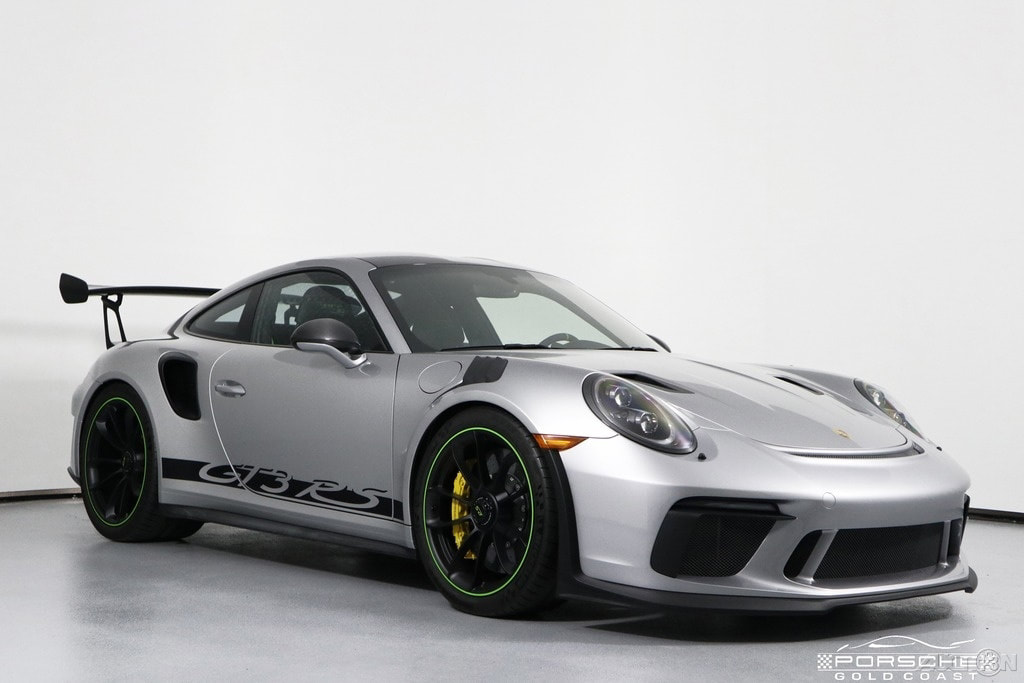
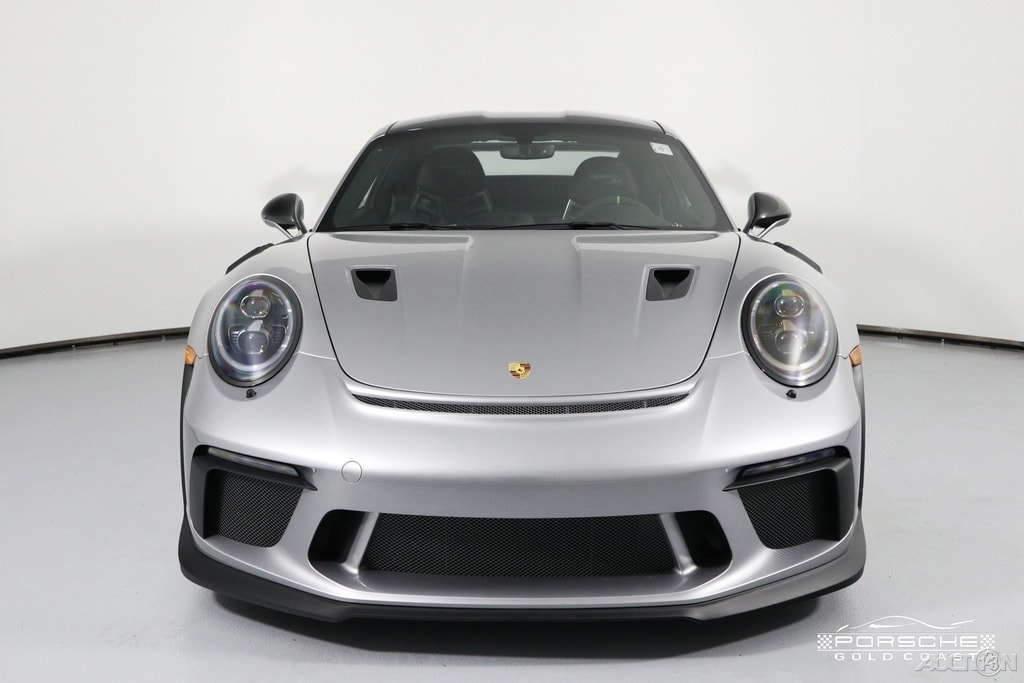

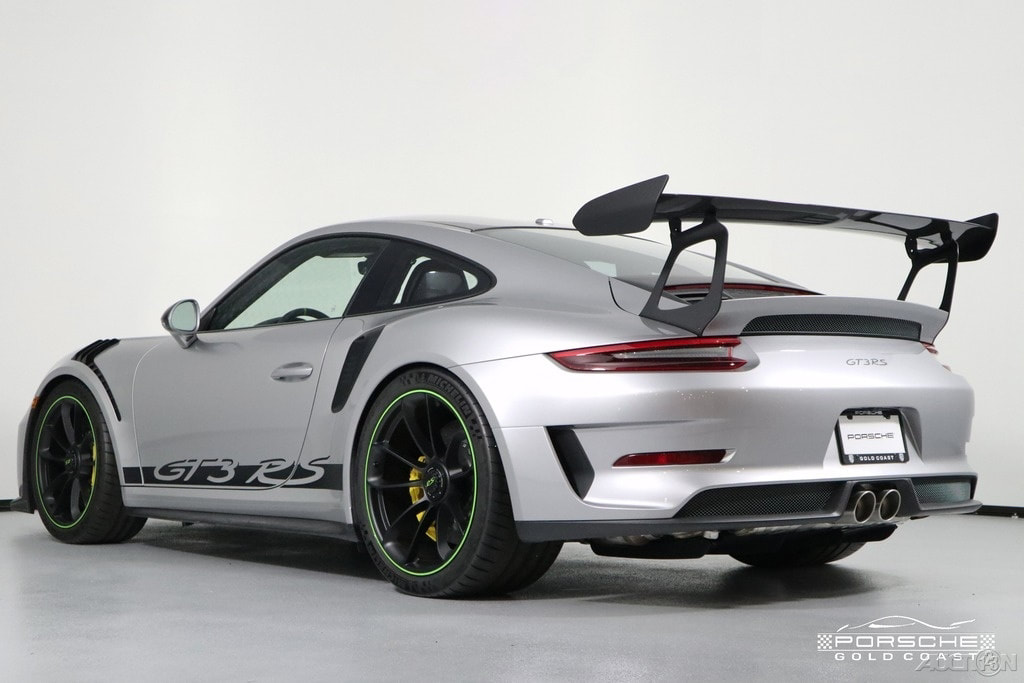


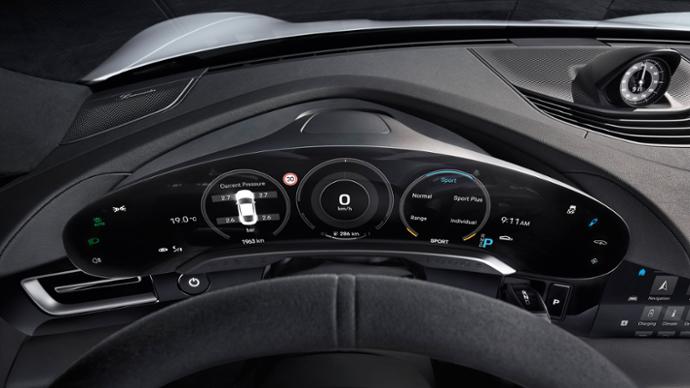

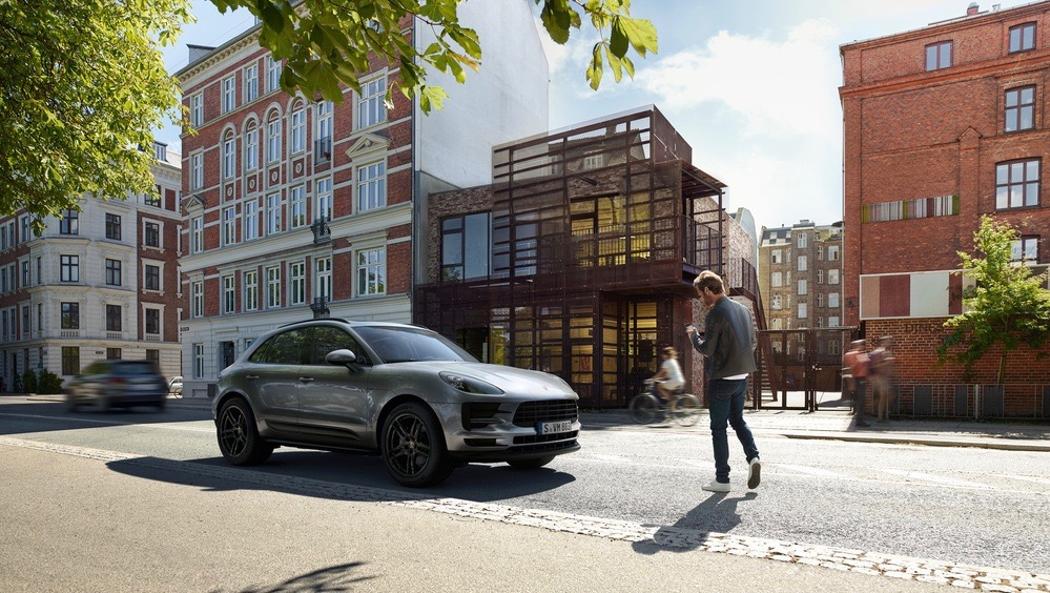
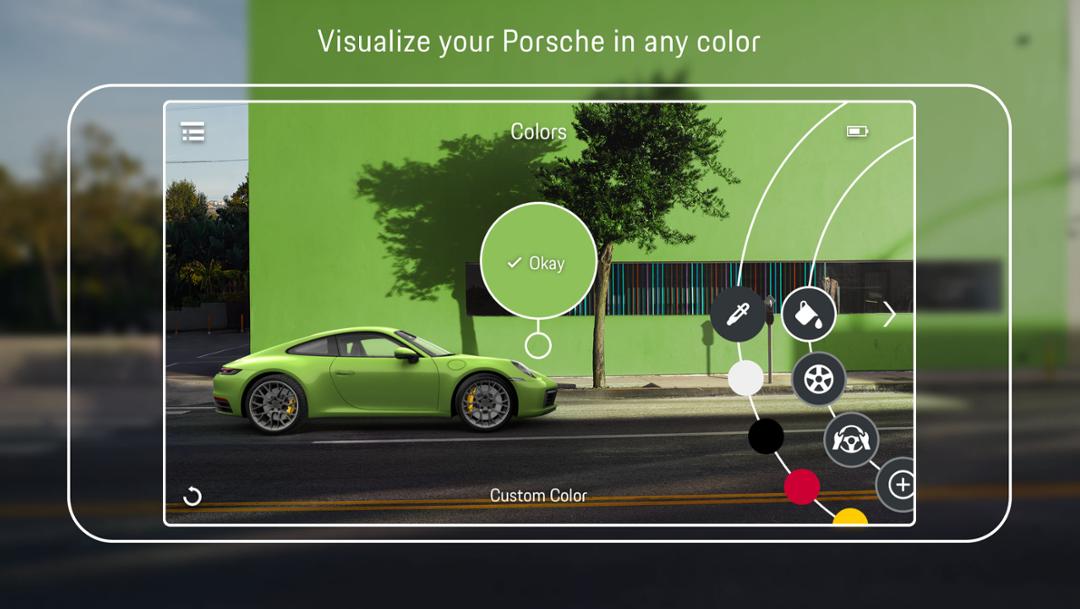
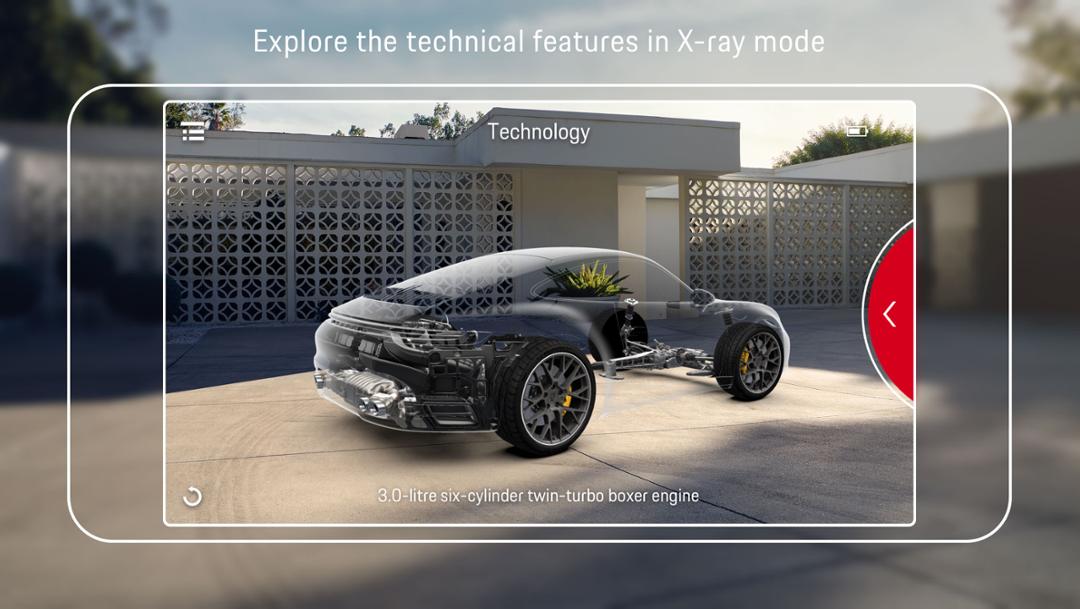






 RSS Feed
RSS Feed